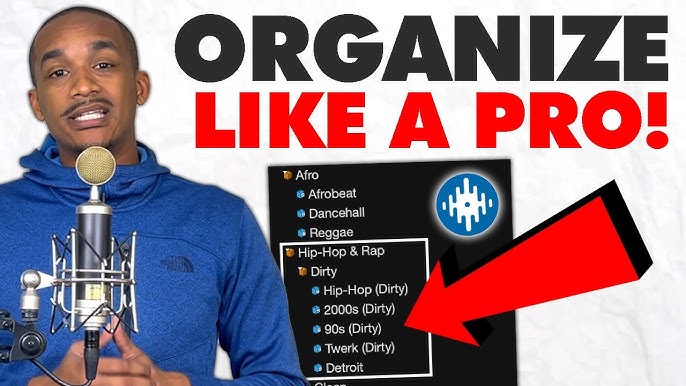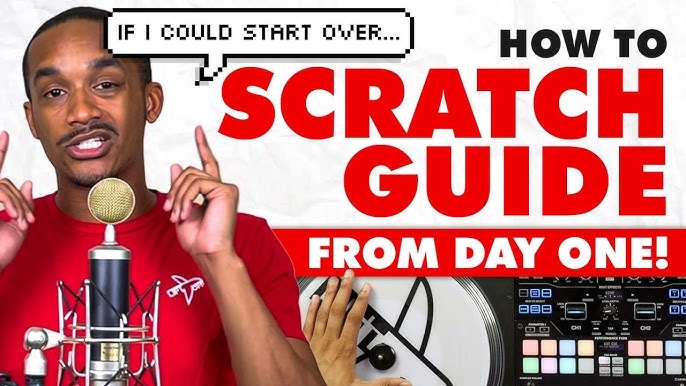To arrange your music like a pro, start by categorizing your songs by genre and tempo. Then, create playlists based on themes and moods using software like Spotify or iTunes.
As a music lover, you probably have a vast collection of songs on your phone or computer. However, finding the perfect song to match your mood can be challenging if your music library is unorganized. But don’t worry, arranging your music like a pro is not as complicated as you may think.
With a little effort and some helpful tips, you can easily categorize your songs, create playlists, and achieve a perfect music collection that matches your preferences. We’ll discuss some easy ways to arrange your music like a pro, so you can enjoy your favorite tunes without any hassle.
Create A Music Library
Organizing your music library like a pro involves creating a system to sort and store your favorite songs. This can be accomplished by categorizing by genre, artist, or mood, and creating playlists for different occasions. Aim for a library that is easy to navigate and enjoyable to listen to.
Creating a music library is crucial for any music enthusiast. It helps in managing your music collection and accessing your favorite music with ease. However, creating a music library is not just about organizing music files in a folder. It’s about arranging your music in a way that makes sense and is easy to navigate. In this post, we will discuss some ways to arrange your music like a pro, starting with cleaning up your music collection.
Clean Up Your Music Collection
Before creating a music library, you need to clean up your music collection. A music library should only contain the music that you listen to regularly. By cleaning up your music collection, you can remove duplicates, broken files, and songs that you no longer listen to, freeing up space on your hard drive.
Organize Files By Genre
Once you have cleaned up your music collection, the next step is to organize files by genre. Organizing music by genre makes it easier to find songs and albums that fit a specific mood or occasion. For instance, if you want to listen to some upbeat music, you can quickly navigate to your “pop” or “electronic” folder.
Tag Your Music Files
Tagging your music files is essential for creating a music library. Tags contain metadata like artist name, album title, release year, and genre, making it easier to find songs and albums quickly. You can use software like MusicBrainz Picard or TagScanner to tag your music files programmatically. In summary, creating a music library is a great way to manage your music collection. By cleaning up your music collection, organizing files by genre, and tagging your music files, you can make your music library more accessible. So, start creating your music library today and take the first step towards becoming a pro at arranging music.

Credit: m.youtube.com
Use Music Management Software
Music management software is a must-have for arranging your music like a pro. It helps categorize your music library, create playlists, and even provides download links for your favorite tracks. Get your hands on music management software and organize your music like a pro in no time.
If you’re someone who loves music and enjoys spending hours curating playlists, then you know how difficult it can be to manage your music library. Keeping a track of all the music files on your computer and mobile phone can be overwhelming, especially if you have a vast collection. This is where music management software comes in handy. In this section, we’ll explore the benefits of using music management software and popular software options that you can use to manage your music collection.
Benefits Of Music Management Software
Music management software can elevate your music experience by making it easier to organize and manage your music library. Here are some benefits of using music management software:
| Effortlessly organize large music librariesEdit and manage metadata informationCreate custom playlists and smart playlists | Drag and drop tracks and albumsAutomatically remove duplicate tracksSynchronize music across devices |
Popular Music Management Software
There are several music management software options that you can choose from depending on your preferences and requirements. Here are three of the most popular options:
- Apple Music/iTunes: If you’re an Apple user, then you’re already familiar with Apple Music/iTunes. It’s an all-in-one music management software that is compatible with macOS and Windows.
- MediaMonkey: MediaMonkey is a popular option for Windows users. It offers an extensive set of features that go beyond basic music management.
- Spotify: While Spotify isn’t primarily a music management software, it offers users the ability to easily create and manage playlists, making it a great option for those who frequently listen to music on-the-go.
Using music management software can take your music listening experience to the next level, making it less stressful and more enjoyable. With the benefits and software options mentioned above, you can easily manage your music collection like a pro.
Organize Your Playlists
Effortlessly organize and arrange your music playlists like a professional with these expert tips. From using descriptive titles to utilizing playlist folders, you’ll discover the best ways to keep your music library in order for an enjoyable listening experience.
Creating a perfect playlist requires proper planning and organization. Whether you are listening to music on your phone, computer, or music player, organizing your playlists will make it easier for you to access your favorite songs. In this section, we will discuss three effective ways to organize your playlists like a pro.
Grouping Similar Songs
Grouping similar songs is an effective way to organize your playlists. This will allow you to find your preferred songs faster. For instance, you can organize your songs by the decade, artist, genre, or mood. In addition, you can create subcategories such as “Romantic Songs,” “Party Songs,” and “Workout Songs.” This way, when you are in the mood to listen to particular music, you can access them quickly.
Separating Soft And Hard Songs
Separating soft and hard songs is an excellent way to avoid awkward transitions. For example, a slow ballad followed by a hard rock song can give an unpleasant experience when listening to your playlist. By sorting them out by tempo or music style, you can have a smooth flow of music without any disturbing surprises. This way, your playlist will make sense and help you enjoy your music to the fullest.
Putting Together Party Playlists
A party playlist is different from other playlists. It should have a collection of upbeat songs that will keep the party going. When creating a party playlist, start with a few high-tempo tracks that will set the mood for the party. Then, follow up with genre-specific songs that will appeal to all guests. Finally, end with a few tracks that will leave a lasting impression on your guests. Creating an organized party playlist will make your party more memorable, and you’ll be remembered as the party master. In conclusion, organizing your playlists will provide you with a better musical experience. Whether you are a casual listener or a die-hard fan, arranging your music will help you access your favorite tracks faster, avoid awkward transitions and create a more appealing playlist. Try out these tips and make your playlists like a pro.

Credit: www.renegadeproducer.com
Keep Your Music Collection Up To Date
Organizing your music collection can be a daunting task, but with the right techniques, you can do it like a pro. Keep your music up to date by creating playlists, organizing by genre/singer, utilizing music management software, and staying consistent with your system.
As music enthusiasts, we all love to collect our favorite tracks and create a library that we can access anytime we want. However, with the ever-increasing collection, it can get challenging to keep track of everything and manage them properly. To enjoy your music to the fullest, keeping your music collection up to date is vital. In this blog post, we will discuss some of the ways you can take your music organization to the next level.
Delete Unwanted Tracks
One of the essential things to keep your music collection updated is to get rid of unwanted tracks. At times, we tend to download entire albums of an artist even if we are not particularly interested in some of the songs. It makes it hard to navigate through our music library. So, it’s essential to go through our collection and delete any tracks we don’t enjoy anymore or don’t fit our music taste. Here are some quick tips to help you get started with deleting unwanted tracks:
- Filter out the songs you haven’t played in a while
- Create a ‘delete’ playlist and add tracks you want to remove
- Don’t be afraid to remove whole albums if you don’t love all the songs
Keep New Music Separate
As music lovers, we come across new songs and artists we want to try out regularly. It’s essential to organize your new music separately to prevent them from getting mixed up with your current library. One way to do this is by creating a separate smart playlist that automatically adds newly downloaded songs to it. Another way is by creating a folder or playlist that you name after the current year, allowing you easy access to newly downloaded tracks and a straightforward way to identify which tracks are new.
Regularly Update Your Music Library
Finally, another critical aspect of keeping your music library updated is to update it regularly. Over time, our music taste changes, and we might stop enjoying songs and artists that were once favorites. Deleting those tracks and continually adding new music will ensure your library stays up to date, and you always have access to the music that resonates with your current preferences. Set a regular schedule for updating your library and stick to it. In conclusion, keeping your music collection up to date is crucial in ensuring you have a hassle-free music experience. By deleting unwanted tracks, organizing new music separately, and updating your library regularly, you can take your music library organization to the next level.
Create Music Backups
Organizing your music collection like a pro includes creating music backups to protect your files from being lost. Whether you use an external hard drive or cloud storage, having a backup plan ensures that you’ll always have access to your favorite tunes.
Creating backups for your music is possibly the most important aspect of managing and organizing your music library. Whether you are a professional musician, music producer, or someone who just loves listening to music, losing your entire music collection can be a huge pain. In this part, we will discuss why you need music backups, types of backup storage, and how often you should back up your music.
Why You Need Music Backups
Backing up your music is the most important thing you should do to ensure you never lose your music collection. Your music library is digital, which means it is vulnerable to various risks such as computer crashes, theft, hardware malfunction, virus attacks, and so on. Unlike physical copies of music, losing your digital music is far more painful. It’s like losing all the memories attached to your favorite songs. Therefore, having backups of your music library will give you peace of mind and the assurance that nothing would happen to your collection and you can listen to your favorite songs anytime, anywhere.
Types Of Backup Storage
Choosing the right type of backup storage is crucial. There are different types of backup storage available, including external hard drives, USB flash drives, cloud storage, and so on. An external hard drive is an excellent option for storing your music library as it provides high storage capacity and reliability. Cloud storage is another excellent option as it allows you to access your music library from any device with an internet connection. USB flash drives are cheap and convenient, so that they are ideal for small music libraries. When it comes to selecting the right type of storage, it depends on your specific needs and preferences.
How Often To Backup Your Music
It is essential to back up your music regularly. For instance, you can back up your music weekly or monthly, depending on how often you add new music. If you have a large music library and you are constantly adding new albums or songs, it is recommended to back up your music more frequently. In case of accidental deletion of files, you can retrieve them from your backup storage. Therefore, ensure you back up your music regularly, without fail. In conclusion, backup your music library is incredibly crucial. By backing up your music library, you can rest assured that your music collection is safe and you can listen to it anytime, anywhere. Choose the right type of storage and back up your music regularly to ensure all your music stays safe.

Credit: m.youtube.com
Frequently Asked Questions Of Ways To Arrange Your Music Like A Pro
How Should Songs Be Arranged?
Songs should be arranged in a thoughtful way that allows for a clear musical structure. This includes creating an engaging intro, building to the chorus, and adding variation to keep listeners interested. The arrangement should also complement the lyrics and melody, while remaining cohesive throughout the song.
How Do You Arrange Existing Music?
To arrange existing music, start by analyzing its structure. Identify key elements like melody, harmony, and rhythm. Use these elements to create an outline for the arrangement. Decide on the instrumentation and any additional parts needed. Finally, record and mix the arrangement, paying attention to balance and dynamics.
How Do You Arrange Pieces Of Music?
Arranging pieces of music requires careful planning and consideration of various elements, such as melody, harmony, rhythm, and instrumentation. The process involves manipulating these components to create a cohesive and enjoyable musical experience for the listener. It also involves decision-making regarding structure, form, and dynamics to create a compelling and engaging piece of music.
How Do You Legally Arrange Music?
Legally arranging music involves obtaining the proper licenses and permissions from the copyright holders. This can include mechanical licenses for reproducing and distributing the music, synchronization licenses for using the music in visual content, and performance licenses for public performances.
It is important to research and follow the guidelines set forth by the copyright laws.
Conclusion
To sum up, arranging music may seem like a daunting task, but with the right mindset and techniques, anyone can do it like a pro. Whether you opt for traditional methods by organizing your songs into albums, or newer, digital techniques by creating playlists and smart playlists, the most important thing is to find a system that works for you and stick to it.
By keeping your music collection organized, you’ll be able to easily find and enjoy your favorite tunes, no matter where you are. So start organizing today, and see how much easier and enjoyable listening to music can be!